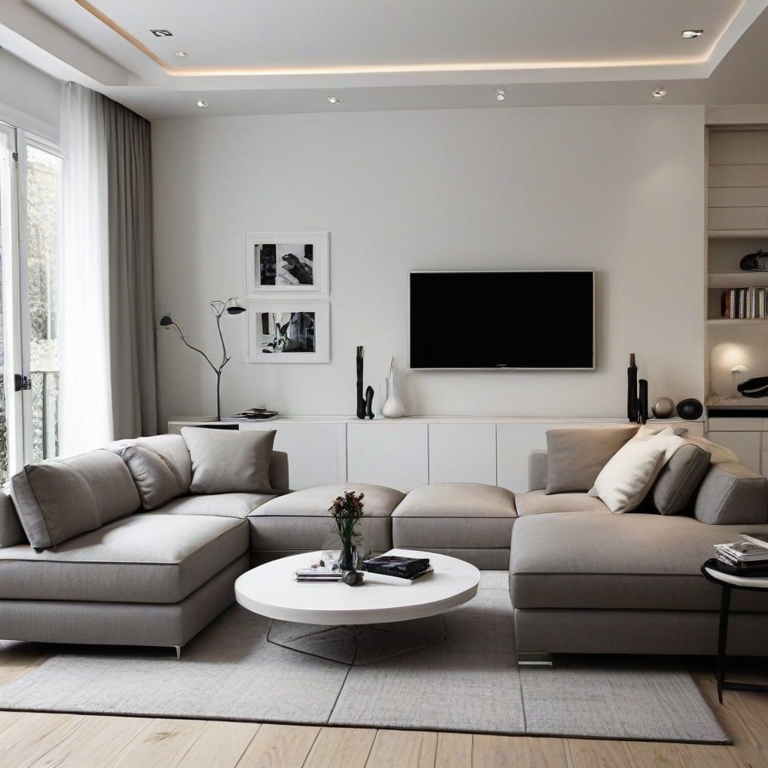Discover smart furniture placement strategies for small living rooms in our latest blog post. Learn how to maximize limited space with multifunctional furniture, clever arrangements, and design tricks that create the illusion of more space. Our step-by-step guide helps you evaluate your layout, choose the right pieces, and finish with touches that enhance comfort and style. Ideal for homeowners looking to transform their compact living areas into welcoming, practical environments.
Introduction: The Challenge of Small Living Rooms
In this third installment of our video series on smart furniture placement for small living rooms, we explore the unique difficulties that homeowners encounter when trying to maximize limited space. A compact living area often presents a complex puzzle of how to arrange furniture in ways that are both functional and visually appealing. Common challenges include limited floor space, difficulty in creating distinct yet harmonious zones for different activities, and the constant battle to avoid a cramped atmosphere.

Previously, we delved into fundamental principles of spatial planning and the importance of multifunctional furniture pieces. We also discussed how the proper selection of furniture styles can contribute to a room feeling more spacious. These foundational tips are critical as we progressively uncover more intricate strategies in this segment.
Please read our article watch the newly uploaded video from our YouTube channel:
“Grig Stamate – Interior Design Solutions”
https://www.youtube.com/@GrigStamate
Small LIVING ROOMS with Smart FURNITURE PLACEMENT, #3 (video)
Here, you can see other related videos from our channel:
Small LIVING ROOMS with Smart FURNITURE PLACEMENT (video)
Small LIVING ROOMS with Smart FURNITURE PLACEMENT, #2 (video)
The primary goal for any small living room is to craft a welcoming and practical environment. Strategic planning and a dash of creativity can go a long way in overcoming spatial limitations. By thoughtfully arranging furniture, selecting items that serve multiple purposes, and incorporating design tricks that give the illusion of more space, you can transform even the coziest living room into a delightful and efficient area.
This blog post aims to tackle these intricacies head-on, providing clear and effective guidelines for achieving the perfect balance of function and style in a small living room. Stay with us as we guide you through clever tips and smart techniques that will help you make the most out of your limited space, ensuring that your living room is not just functional, but also a true reflection of your personal style.
Evaluating Your Living Room Layout
Before diving into specific furniture placement tips, it’s crucial to understand the current layout of your living room. The initial step involves taking precise measurements of the space. Accurately measuring the dimensions, including the length, width, and height of the room, will provide a clear framework for effective furniture placement. This data serves as the foundation for choosing appropriately sized furniture and understanding spatial limitations.
Identifying natural focal points within your living room is the next key task. Focal points can range from architectural features like a fireplace or large window to a notable piece of artwork or even an entertainment system. Recognizing these elements helps in positioning furniture to naturally draw attention, creating a balanced and visually appealing arrangement.
Assessing traffic flow is another vital component of evaluating your room’s layout. Consider how people move through the space and ensure pathways are unobstructed. High-traffic areas should remain free of bulky furniture to prevent congestion and enhance ease of movement. This consideration is particularly significant in smaller rooms where space is at a premium.
Defining the purpose of your living room is equally important. Whether the room is intended for relaxation, entertaining guests, or serving as a multipurpose area, understanding its primary function guides decisions on what furniture to keep, remove, or introduce. For instance, a living room meant for entertainment might prioritize seating arrangements that encourage conversation and viewing angles for a television.
Decluttering should not be underestimated when evaluating your space. A minimalistic approach can significantly benefit smaller living rooms. Removing unnecessary items opens up the room, making it appear more spacious and reducing visual clutter. Thoughtfully selected furniture pieces that serve multiple purposes can further enhance functionality without overwhelming the space.
In summary, a thorough evaluation of your living room layout involves measuring the space, identifying focal points, assessing traffic flow, and defining the room’s primary function. This foundational understanding ensures informed decisions that maximize space and enhance the overall living experience.
Smart Furniture Choices and Arrangements
Maximizing space in a small living room requires strategic furniture choices and thoughtful placement. Incorporating multifunctional furniture can significantly enhance the usability of a compact area. Consider sofas with hidden storage, enabling you to stow away items like blankets or magazines without cluttering the room. Nesting tables are another excellent option; they can be separated when in use and neatly stacked to save space when not needed. Similarly, fold-out desks provide a functional work area that can be tucked away when it’s time to unwind.
The arrangement of larger pieces plays a crucial role in maintaining an open feel. Placing a sofa against the wall frees up valuable floor space, making the room appear more spacious. Floating shelves are a practical alternative to traditional bookcases, offering storage without the bulk. These shelves maintain an airy atmosphere while providing ample space for books, decor, and personal items.
Creating defined zones within the living room can make the space feel more organized and intentionally designed. Using area rugs to delineate different sections, such as a seating area and a reading nook, provides visual and functional boundaries. Similarly, furniture placement can also define zones; positioning a console table behind a sofa can separate the living area from an entryway, for instance.
Visual examples and success stories can further illustrate the impact of smart furniture arrangements. For instance, a small city apartment transformed through clever use of multifunctional furniture and strategic placement techniques. One case saw the owner utilizing a fold-out desk by day and a compact dining table by night, optimizing the space for different activities. Another example showcased the use of tiered coffee tables that serve as both storage and surface space, enhancing both functionality and aesthetics.
Through these thoughtful approaches, it’s evident that smart furniture placement can significantly maximize the utility and appeal of small living rooms, creating a more comfortable and inviting environment.
Final Touches to Enhance Space and Comfort
As you approach the final stages of smart furniture placement, consider incorporating finishing touches that complete your small living room’s design and enhance its overall comfort. Thoughtful use of lighting, color schemes, and carefully chosen decorative accessories can transform your living space into a welcoming and visually appealing area.
Lighting plays a pivotal role in brightening up small living rooms and creating a more inviting atmosphere. Maximize natural light by keeping window treatments light and minimal. Sheer curtains or blinds can allow ample daylight to filter through without compromising privacy. Complement natural light with the strategic use of artificial lighting. Opt for layered lighting by combining ambient, task, and accent lights. Ceiling lights or pendant fixtures provide overall illumination, table lamps and floor lamps offer targeted lighting for reading or other activities, and wall sconces or under-shelf lights can highlight specific areas.
Color schemes significantly impact the perception of space in a small living room. Light and neutral colors, such as whites, soft grays, and pastels, can make the room appear larger and airier. Consider contrasting these with darker accents to add depth and visual interest. Mirrors can also create the illusion of more space by reflecting light and views. A large mirror positioned opposite a window will amplify natural light and visually expand the room.
When selecting accessories and décor, aim for pieces that complement the room’s design without overwhelming it. Thoughtfully chosen wall art, throw pillows, and plants can add personality and character while maintaining a sense of balance. Ensure that these items do not clutter the room, which can detract from the spaciousness you’ve worked to achieve.
To delve deeper into making the most out of your small living room, watch our detailed video guide. We also encourage you to share your own transformations on social media, using our tips to inspire and connect with others.
Other related posts from our website:
Let’s see here, three of them:
https://howtobuildahouseblog.com/small-living-rooms-with-smart-furniture-placement-2/
https://howtobuildahouseblog.com/maximizing-space-smart-furniture-placement-for-small-living-rooms/
https://howtobuildahouseblog.com/how-to-style-a-small-living-room-on-a-budget-2/
We also sincerely hope you like our ideas from this post, and you have also enjoyed our uploaded YouTube video.
See you next time at another article.
Thank you so much for your time. Bye now!



No Responses